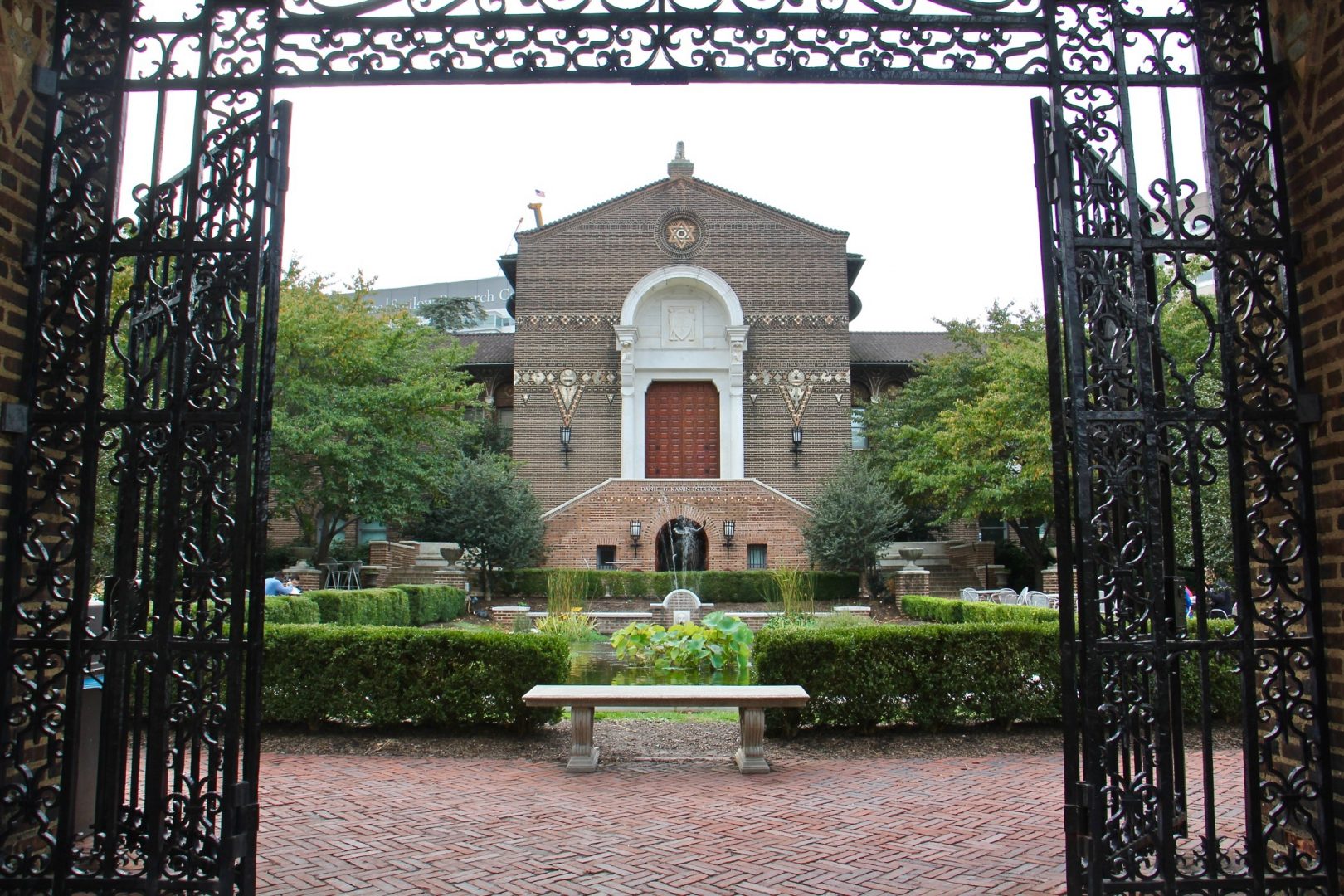
Penn Museum at the University of Pennsylvania.
Emma Lee / WHYY

Penn Museum at the University of Pennsylvania.
Emma Lee / WHYY

Emma Lee / WHYY
Penn Museum at the University of Pennsylvania.
(Philadelphia) — Dozens of human skulls of Black people – some hundreds of years old — will be returned to their communities of origin for reburial, according to a commitment by the University of Pennsylvania’s Museum of Archeology and Anthropology.
On Monday, the Penn Museum issued both an apology for possessing the skulls in its historic Morton Collection and outlined a plan to repatriate them.
“The Penn Museum and the University of Pennsylvania apologize for the unethical possession of human remains in the Morton Collection,” wrote Dr. Christopher Woods, who became the new director of Penn Museum on April 1. “It is time for these individuals to be returned to their ancestral communities, wherever possible, as a step toward atonement and repair for the racist and colonial practices that were integral to the formation of these collections.”
The Morton Collection of more than 1,000 human skulls was assembled in the 19th century by Dr. Samuel Morton, who used them in an attempt to find an anthropological basis for white supremacy. He died in 1851 and his conclusions are now regarded as deeply racist.
Some of the remains were not acquired through ethical or legal means, including 51 skulls of enslaved Africans that were dug out of a graveyard in Cuba. Several skulls are believed to have belonged to Black Philadelphians, likely bought from grave robbers.
Morton assembled his collection while working at the Academy of Natural Sciences. In 1966, more than a century after his death, the collection was moved to the Penn Museum where researchers used it to study the effects of diet, trauma, and disease on human anatomy.
The origins of the collection have never been a secret: During a public lecture in 2011, Penn Museum’s keeper of physical anthropology Janet Monge called Morton a “flaming racist.” Recently, scientists and activists have protested the museum’s possession of human remains of Black people acquired through unethical means.
“Any commitment to addressing Penn’s historical complicity in the institution of slavery must address itself to all aspects of anti-Black racism, which extends to all Black bodies in historic anatomical collections,” wrote Ph.D. candidate Paul Mitchell in his recently published research on the Morton Collection.
The museum began seriously considering how to address the problem of the Morton Collection last summer.
“It was the direct result of the killing of George Floyd, the rise of Black Lives Matter,” Woods said. “This is what brought this issue to the forefront.”
On Monday, Woods released a plan to form a new committee that will assess and determine how each skull will be repatriated, to Cuba, to communities in Philadelphia, and – if appropriate – to Africa. The committee will include people from Penn’s offices of Social Equity & Community, Government and Community Affairs, the University Chaplain, and General Counsel.
One of the challenges of sending these skulls back where they belong is determining where exactly that is. Only one skull is identified by name: a man named John Voorhees, according to Mitchell’s paper. Morton did not keep records identifying the skulls, only that they were from Black people.
“The pseudo-scientific research that he conducted was to justify white supremacist views of race,” Woods said. “That was the one element of this that he was interested in. So those individuals are identified by race.”
Woods said the museum commitment to repatriation will go beyond the Morton Collection, extending to the wider Penn Museum collection of about a million artifacts, both cultural and anthropological. Modeled after the federal Native American Graves Protection and Repatriation Act (NAGPRA), the process will be a combination of professional research and consultation to determine the wishes of the communities associated with the remains.
“This is the era of transparency that we want to see unfold,” he said. “If our goal is to repatriate these individuals, these ancestors, wherever possible, that means community involvement has to be a big part of this at every single step of the way.”
WHYY is the leading public media station serving the Philadelphia region, including Delaware, South Jersey and Pennsylvania. This story originally appeared on WHYY.org.

Get insights into WITF’s newsroom and an invitation to join in the pursuit of trustworthy journalism.
The days of journalism’s one-way street of simply producing stories for the public have long been over. Now, it’s time to find better ways to interact with you and ensure we meet your high standards of what a credible media organization should be.